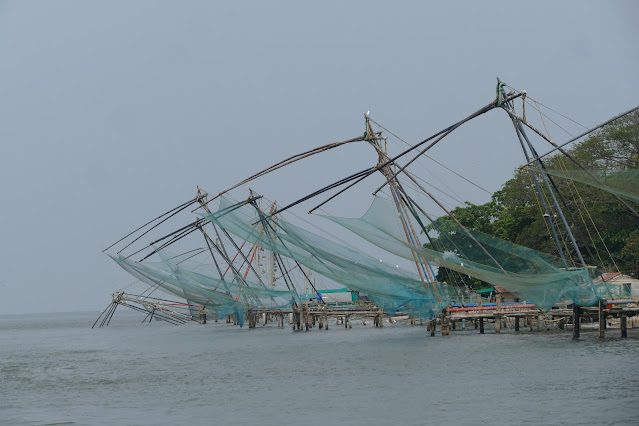The Hotel Seagull is one of our favourite restaurants in Fort Kochi, partly
because it's right on the river and has a nice breeze, good ale, good food and
from my point of view some decent birding.
Several species of herons and egrets can be seen from the hotel, including
intermediate egret as shown in the photo above. It's easy to see 50 of these
birds on a single visit to Fort Kochi.
Eastern great egret are less common but still it would be a bad day if you saw
less than 10.
Little egrets are also regularly seen.
Western reef herons are usually around in low single figures, and usually
around the Chinese nets.
They have an exceptionally long bill for an egret.
Chinese pond herons are one of the smallest herons, but quite numerous. This
bird is in non-breeding plumage.
Whereas this bird is in full breeding plumage.
Little cormorants are quite numerous.
At this time of year, whiskered terns are the commonest tern, with perhaps 20
seen from the hotel at any one time. Other terns include occasional
gull-billed and lesser crested.
Brown-headed gull is the only species of gull I have seen so far on this trip,
and in fact this is the only individual.
Indian Ocean humpbacked dolphins are resident.
Chinese nets at Fort Kochi.
Chinese nets Vypin.
Traditional fishing boats in the harbour.












































